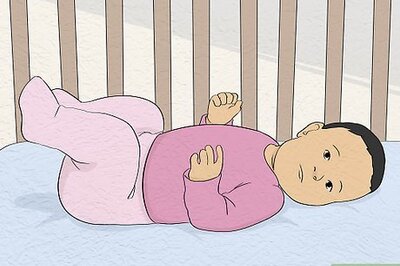
views
From a remote village in Khandwa to the shores off Koodankulam, a mode of protest that seems to catching on like quickfire is the Jal satyagraha. Even as images of men and women standing half inside a lake, river or sea begin to flash in your mind, it is alarming to note that this form of protest can be really unhealthy.
“There are a whole load of problems that can come with standing in any Indian water body,” states Dr J S Rajkumar, chief surgeon of Lifeline Hospitals, “Technically, if the water is clean and clear, then it really isn’t too much to worry about, but that’s never the case with water bodies here,” he adds.
Jal Satyagraha or ‘insistence on truth by water’ caught the nation’s attention (and fancy) when a group of villagers in Madhya Pradesh, immersed themselves up to their necks, and stayed there for over 15 days. Though their demands for better compensation as their homes were in the submersion zone of a dam there, have barely been met — anti-nuke protestors took a leaf out of their book. Fisherfolk stood in waist-deep water last week and staged a protest against the commissioning of the Koodankulam Nuclear Power Project.
As far as standing in still water bodies goes — like a lake or pond — the largest worry is infection from guinea worms, “These worms are very common in lakes and climb into any crevice in the body. They fester inside the body and can grow larger, while causing serious infections,” adds Dr Rajkumar. People who work barefoot and with water come in with small holes in their feet, “Women who sow crops and fishermen usually have infections in their legs. Once we spot the hole, we have to literally pull the worms out of them,” he says descriptively.
Another problem with standing for hours in any sort of water is that the skin gets wrinkled and can cause the feet to lose sensation. “Even if there is a small cut or the skin cracks, bacteria or fungi in the water can cause infection,” says Dr Palani, a retired government doctor, “Walking through rainwater itself is risky, can you imagine the amount of germs in standing water bodies?” he queries sardonically. Feet and toes can get cut underwater and infections can enter the body without the person feeling any pain, “The water tends to subdue pain felt,” he adds.
All said and done, standing in water just can’t kill you. Unless you’re the fisherman A Sahayaraj from Idinthakarai, who slipped off the groyne and hit his head on the boulders, “Or if you’re diabetic,” cautions Dr V Mohan, diabetologist and chief of Dr Mohan’s Diabetes Specilaities Clinics. As most rural diabetics tend to have little sensation in feet, they wouldn’t even know if they were bruised, bleeding or had a leech stuck on their feet, “As they have insensate feet, any small infection that enters their blood stream can fester inside water and cause serious trouble,” he reveals.




















Comments
0 comment